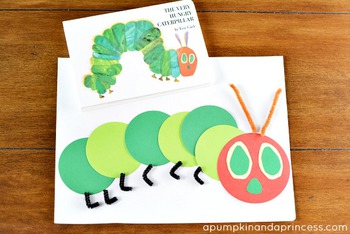During Level II Fieldwork, I worked with a child who had a hemiplegia on his left side affected. His goal was to use scissors to cut along curved lines with the paper stabilized. I chose a balloon toss activity to help work on bilateral use of both hands as a preparatory activity. I also used the game “Red Light, Green Light” (RLGL) before the activity to help with brain organization. He really struggled with motor planning: usually, he would use his affected hand to stabilize the paper, and use his unaffected hand to cut with the scissors; but, he had a habit of going full-throttle with the scissors, and would cut all the way across the paper instead of along the curved line. We played RLGL to help him remember to stop and turn the paper before continuing his cut, turning the circles to cut out the shape of a caterpillar’s body.
I spent some time getting to know this child, and discovered that he enjoys learning about different bugs and snakes. This activity was challenging and motivating to the child because we incorporated the use of bug shapes, which appealed to his love of bugs. His main occupation is play; the occupation of making a paper caterpillar was fun for him and was something he hadn’t done before. The activity itself was challenging to the client, due to his poor motor planning. I graded it up and down when necessary. I provided an outline for the circles that made up the body of the caterpillar. Before I began working with him, he had been using a goose clamp to stabilize paper during cutting activities. I observed this a few times, and saw that the goose clamp was inhibiting his ability to turn the paper. I removed the paper from the goose clamp and handed him the paper so he could stabilize it using his affected hand. The paper was too big for him to work with, so I graded the activity down a bit by cutting the excess paper around the circle so there was less paper to work with. At first, I used hand-over-hand assistance to help him turn the paper, as well as verbal cueing. As he progressed, I decreased the hand-over-hand assistance and relied more on verbal cues to guide him in cutting along the line.
Occupation-based activities are more meaningful for children—it really motivates them. I was fortunate to witness this at fieldwork. I enjoyed making the activity interesting, engaging and challenging for the child. I found it easy to read his facial expressions to gauge whether the activity was enjoyable. I think that as a result of having him use his affected hand instead of the goose-clamp, he felt a greater sense of control and was more inclined to turn the paper himself. Once you build rapport it is easier to provide occupation-based activities for the child; it is important to build that trusting relationship and learn about the child’s interests.
References
- Pumpknaprincess (2014). The very hungry caterpillar activities. Retrived from http://apumpkinandaprincess.com/2013/09/hungry-caterpillar-activities-100-book-bundle-giveaway.html
